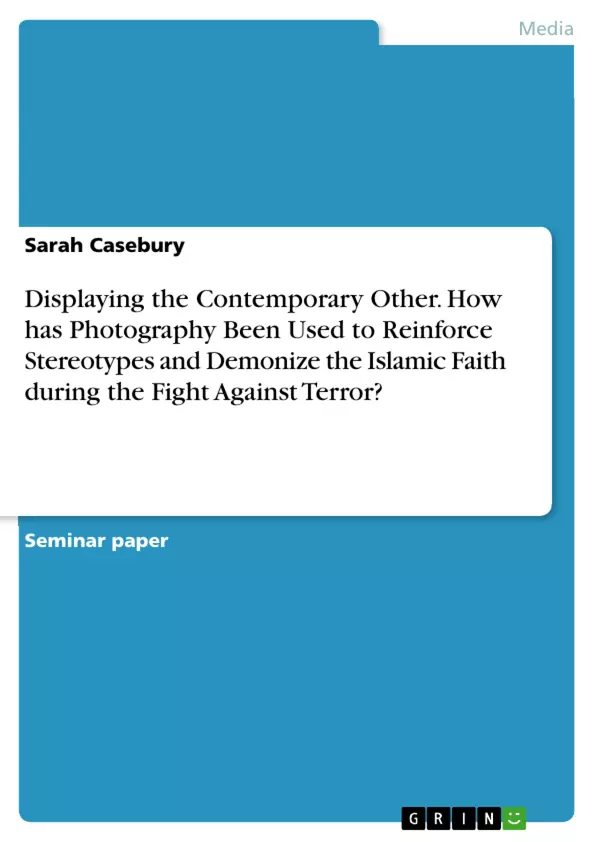Within this essay I will underline and explore the notion of terrorists as the ‘the contemporary other’; furthermore I will elaborate on what is meant by this terminology. The question I will be discussing is how the West has represented the ‘contemporary other’ through photography, and inquiring into the effects this has had on the way we shape, see and understand fundamentalists and, by implication, Islam. I will question how this has strengthened, or even given credit to, stereotypes that demonise the Islamic Faith.
Using John Tagg’s theory of the ‘double movement’ to display how photography can reinforce preconceptions and help to reinforce stereotypes. Furthermore, I will explore the ways in which multiple platforms have represented Islamist organisations, and what impact this may have had on the way in which we perceive those who follow Islamic beliefs, stating how this may be linked to increases in Islamophobia within the West.
Inhaltsverzeichnis (Table of Contents)
- Displaying the Contemporary Other: How has Photography Been Used to Reinforce Stereotypes and Demonise the Islamic Faith during the Fight Against Terror?
- Framing the Contemporary Other
- 'The other' is a complicated concept
Zielsetzung und Themenschwerpunkte (Objectives and Key Themes)
This essay aims to explore how photography has been utilized to represent and demonize Islamic individuals and organizations within the context of the 'war on terror.' The essay examines the concept of the "contemporary other" and analyzes how photographic representations have contributed to the reinforcement of stereotypes and Islamophobia.
- The role of photography in shaping perceptions of Islam and Muslims.
- The concept of the "contemporary other" in relation to terrorism and Islamophobia.
- The impact of Western media representations on public understanding of Islam.
- The influence of historical frameworks such as "Orientalism" in contemporary representations of Islam.
- The relationship between photographic representations, stereotypes, and the rise of Islamophobia.
Zusammenfassung der Kapitel (Chapter Summaries)
- Displaying the Contemporary Other: How has Photography Been Used to Reinforce Stereotypes and Demonise the Islamic Faith during the Fight Against Terror? This section introduces the essay's central question and explores the contemporary context of the "war on terror" and its impact on perceptions of Islam. It highlights the role of photography in representing conflict in the Middle East and the potential for reinforcing stereotypes.
- Framing the Contemporary Other This section delves into the complex concept of "the other" and its historical and social implications. It discusses how "the other" is often constructed in opposition to the "self" and examines the role of difference, strangeness, and categorization in shaping perceptions of others.
Schlüsselwörter (Keywords)
This essay focuses on the critical terms "photography," "Islamophobia," "stereotypes," "contemporary other," "Orientalism," and "Western media representations" to explore the complex relationship between image, representation, and societal perceptions of Islam in the context of the "war on terror."
- Quote paper
- Sarah Casebury (Author), 2016, Displaying the Contemporary Other. How has Photography Been Used to Reinforce Stereotypes and Demonize the Islamic Faith during the Fight Against Terror?, Munich, GRIN Verlag, https://www.grin.com/document/345519



